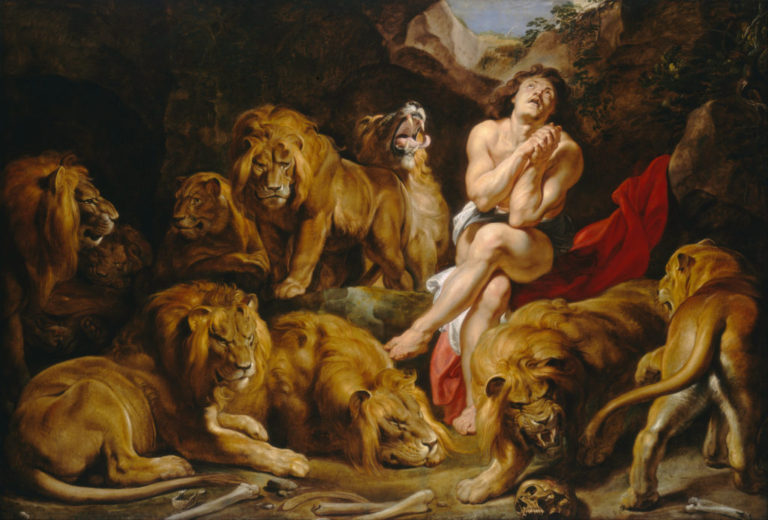Of art, elephants, and humility

I can’t remember a single class on the wonder of sitting in front of really big paintings. Recently, perched on a bench in front of a more than 7 by 10 foot canvas, it felt, as Bernie Sanders might say, like a yuge oversight.
Viewing a painting in a gallery is different than looking at the same painting on a screen or in a book. (Duh, you might say.) I do not mean to imply that one experience is better, only that each experience is different. Screens and books, for example, remove the way light dances across textured brush strokes. A viewer, however, can appreciate Daniel in the Lions’ Den just as well on a screen or page as in a gallery. Recently, though, it struck me while admiring just that painting at the National Gallery of Art that screens and books fail to adequately convey one quality of art in particular: size.
This probably seems trivial, even silly. But it struck me all the same.
All of my previous ideas about art gained from web searches, textbooks, and power point presentations ignored its material reality; that paintings were objects with size and mass and presence seemed unimportant before this sudden realization. What mattered were ideas—eras, themes, symbols. Never had an art teacher quipped that, by the way, some of these paintings rival elephants in size. Art remained abstract, something to think about rather than experience.

That an artwork has presence is not a new idea. After my gallery experience, I finally got around to reading The Work of Art in the Age of Mechanical Reproduction by philosopher and cultural critic Walter Benjamin. In the essay, Benjamin writes that “even the most perfect reproduction of a work of art is lacking in one element: Its presence in time and space, its unique existence at the place where it happens to be.” This is what I had felt in the gallery and failed to feel viewing the painting again on a screen later — its presence in time and space. Benjamin had identified this phenomenon more than eighty years earlier.
Presently, I spend most days looming over tiny screens that fertilize feelings of power and importance through sheer quantity of reproduced words and images. Endless feeds remove space and absorb time. A small museum bench and a large painting looming over it, in contrast, invite feelings so rarely reproduced on screens: awe, wonder, and humility. We could all use more of those feelings.
Note: I’m indebted to John Berger’s Ways of Seeing series and the School of Life for inspiring a more concrete engagement with art.